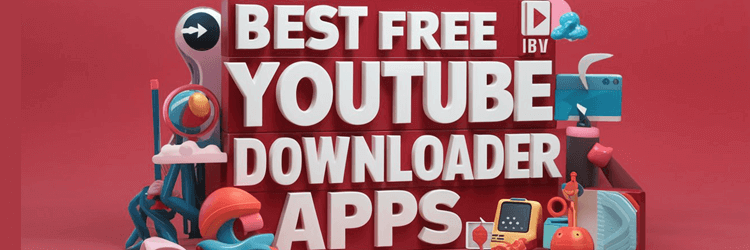In today’s digital world, YouTube serves as a treasure trove of content for professionals. Whether you’re preparing a business presentation, an educational lecture, or a creative project, YouTube videos can provide valuable insights and media to enhance your work. However, downloading YouTube videos for such purposes might seem daunting if you’re unsure where to start. This guide will walk you through the process step-by-step, ensuring that you use these videos responsibly and effectively.
Understanding Copyright and Legal Considerations
Before delving into the technical aspects of downloading YouTube videos, it’s crucial to understand copyright laws. YouTube’s terms of service explicitly prohibit unauthorized downloads of content unless the video’s owner has made it available for offline viewing.
When is it Legal to Download Videos?
- Permission Granted by the Owner: Some creators allow their videos to be downloaded or shared offline.
- Creative Commons License: Videos marked with a Creative Commons license can often be used for personal or professional purposes with proper attribution.
- Public Domain Content: Videos in the public domain are free to use without restrictions.
- Fair Use: For educational or transformative purposes, you may use clips in compliance with fair use laws.
If you’re unsure about the legalities, always seek permission from the content creator before downloading their videos.
Tools and Methods to Download YouTube Videos
Numerous tools are available to download YouTube videos, but not all are reliable or safe. Here are some trusted options:
1. Online Video Downloaders
Online platforms are one of the simplest ways to download videos. Popular options include:
- Y2Mate
- SaveFromNet
- KeepVid
Steps to Use Online Downloaders:
- Copy the YouTube video URL.
- Paste it into the search bar of the online downloader.
- Choose your desired format and quality (e.g., MP4, 1080p).
- Click the download button and save the file.
Keyword Tip: Use these tools to convert videos for presentations. Combine keywords like “YouTube to MP3” and “Download YouTube MP3” when searching for audio options.
2. Software for Downloading Videos
For those requiring advanced options or batch downloads, software tools are a better choice. Examples include:
- 4K Video Downloader: Known for high-quality video downloads.
- Freemake Video Downloader: Offers support for multiple formats.
- Any Video Converter: Converts videos into a variety of formats.
How to Use Downloading Software:
- Download and install the software.
- Open the application and paste the video URL.
- Select the desired format and quality.
- Start the download process.
3. Browser Extensions
Extensions for browsers like Chrome and Firefox can simplify the downloading process. Examples include:
- Video DownloadHelper
- Flash Video Downloader
These tools add a download button directly on the YouTube page, making the process seamless.
YouTube to MP3: Extracting Audio
For presentations requiring only audio—such as background music, narration, or interviews—converting YouTube videos to MP3 is a practical option.
Steps to Convert YouTube Videos to MP3:
- Use platforms like YTMP3 or MP3Juices.
- Paste the YouTube URL into the conversion tool.
- Select “MP3” as the output format.
- Download the converted audio file.
Note: Ensure the audio content aligns with copyright regulations. Using tools with keywords like “YouTube to MP3” simplifies finding these platforms online.
Best Practices for Using Downloaded Videos in Professional Presentations
Once you’ve downloaded your video or audio content, it’s time to incorporate it into your presentation. Follow these best practices:
1. Optimize Video Length
Long videos may lose your audience’s attention. Use video editing software to trim unnecessary parts and focus on key moments.
2. Maintain Quality
Ensure the video or audio quality matches the standard of your presentation. Low-resolution media can appear unprofessional.
3. Cite Your Sources
Always credit the original content creator. Include a citation in your presentation’s credits or slides.
4. Integrate Seamlessly
Embed videos directly into your slides using PowerPoint, Google Slides, or similar tools. This avoids technical hiccups during the presentation.
5. Test Before Presenting
Run through your presentation beforehand to ensure all videos and audio play smoothly.
Responsible Usage of Downloaded Content
Using downloaded YouTube videos responsibly is paramount. Here’s how:
Acknowledge Creators
Credit the original creators both verbally and visually in your presentation.
Avoid Redistribution
Never share downloaded content publicly unless you have explicit permission from the creator.
Use Content Appropriately
Stick to professional, educational, or transformative uses to align with fair use principles.
Additional Resources
- Editing Tools: Use software like Adobe Premiere Pro or Final Cut Pro to edit downloaded videos for a polished look.
- Audio Enhancers: Improve audio quality with tools like Audacity or GarageBand.
- Storage Solutions: Keep your files organized using cloud services like Google Drive or Dropbox.
Conclusion
Downloading YouTube videos for professional presentations can enhance your content and engage your audience when done correctly and ethically. By using reliable tools and adhering to copyright laws, you can harness the power of YouTube to elevate your work.
Remember, whether you’re converting “YouTube to MP3” or downloading videos in MP4 format, always respect the original creator’s rights and aim for high-quality content. With the strategies outlined in this guide, you’re well-equipped to create impactful presentations that leave a lasting impression.


